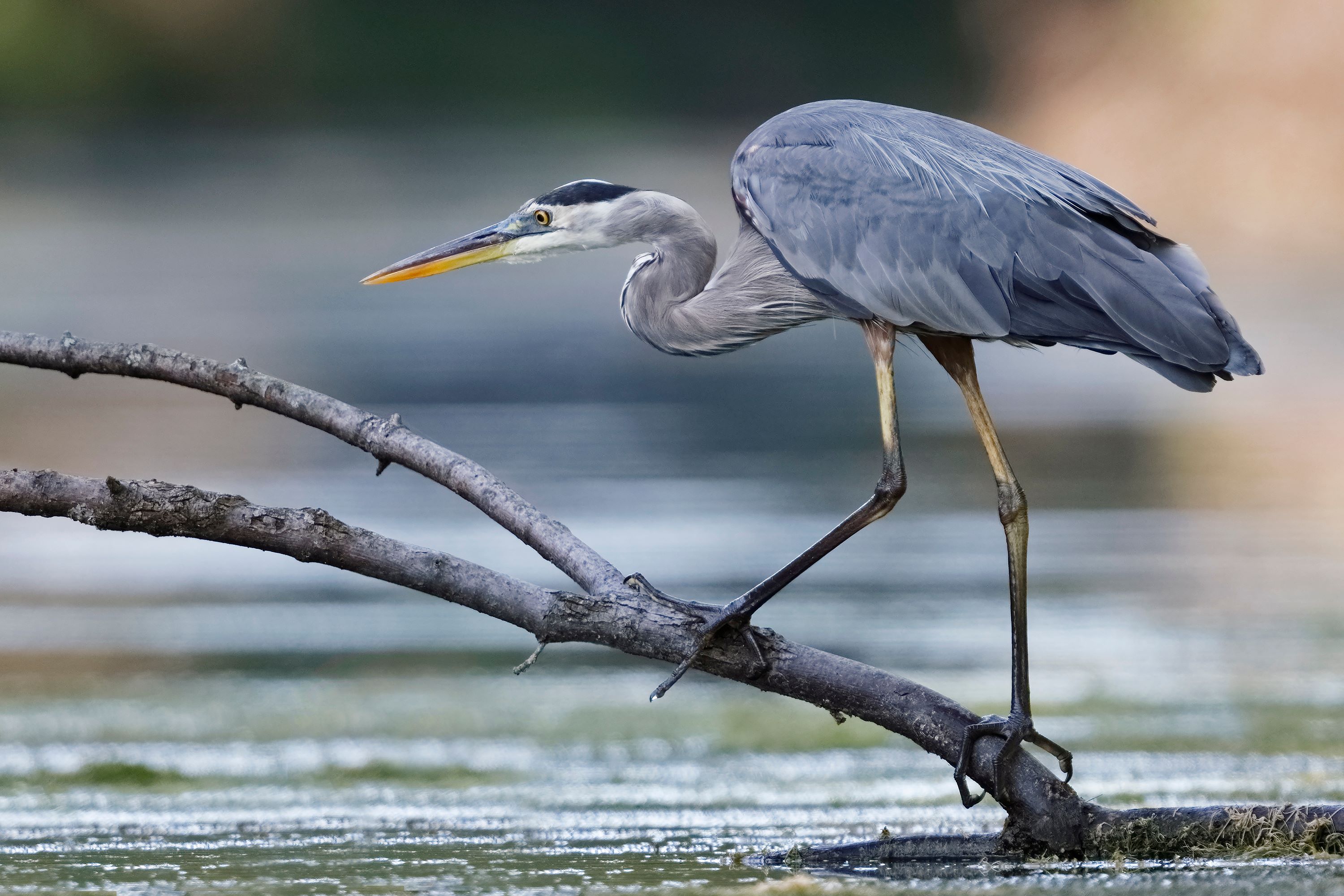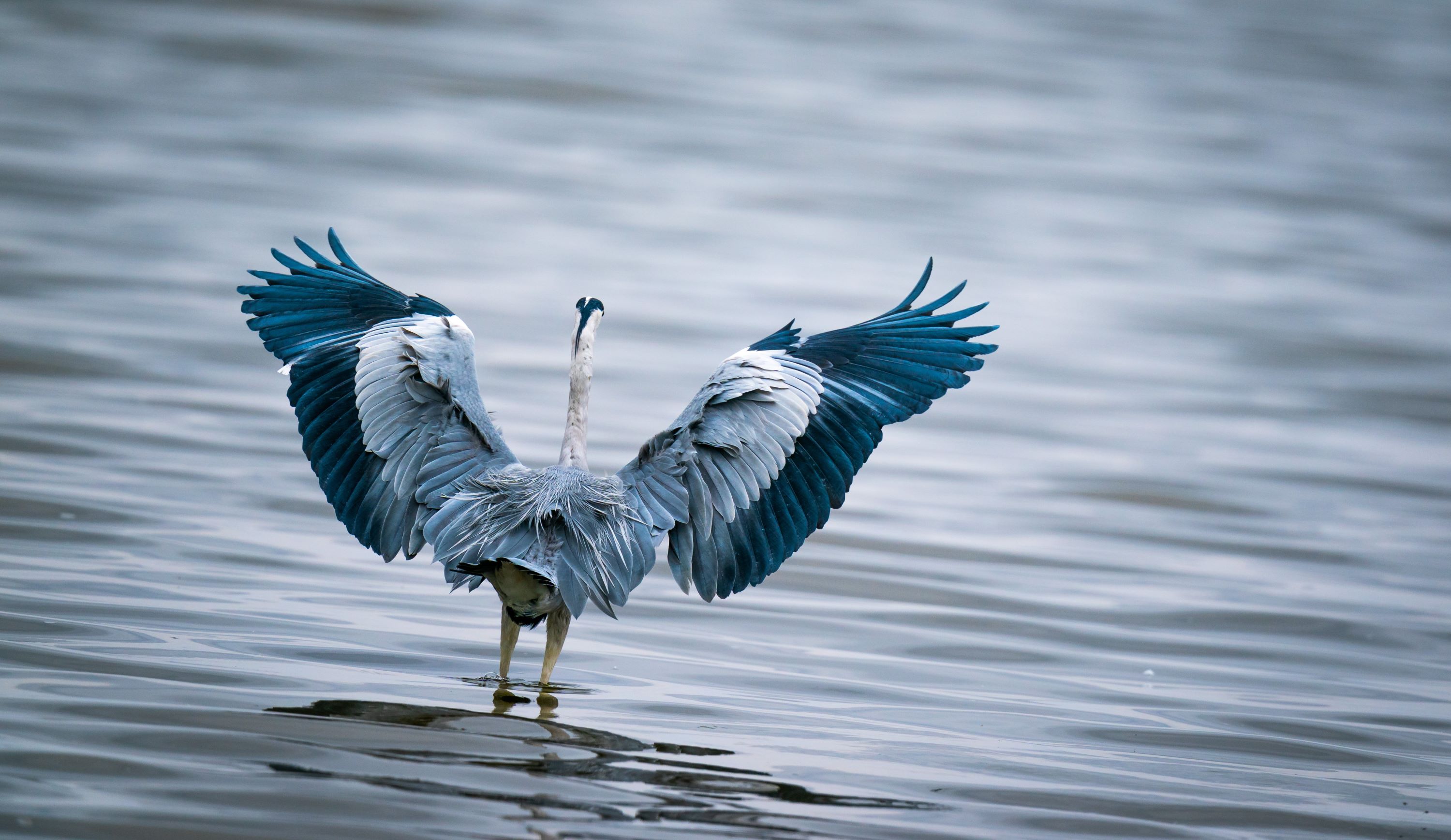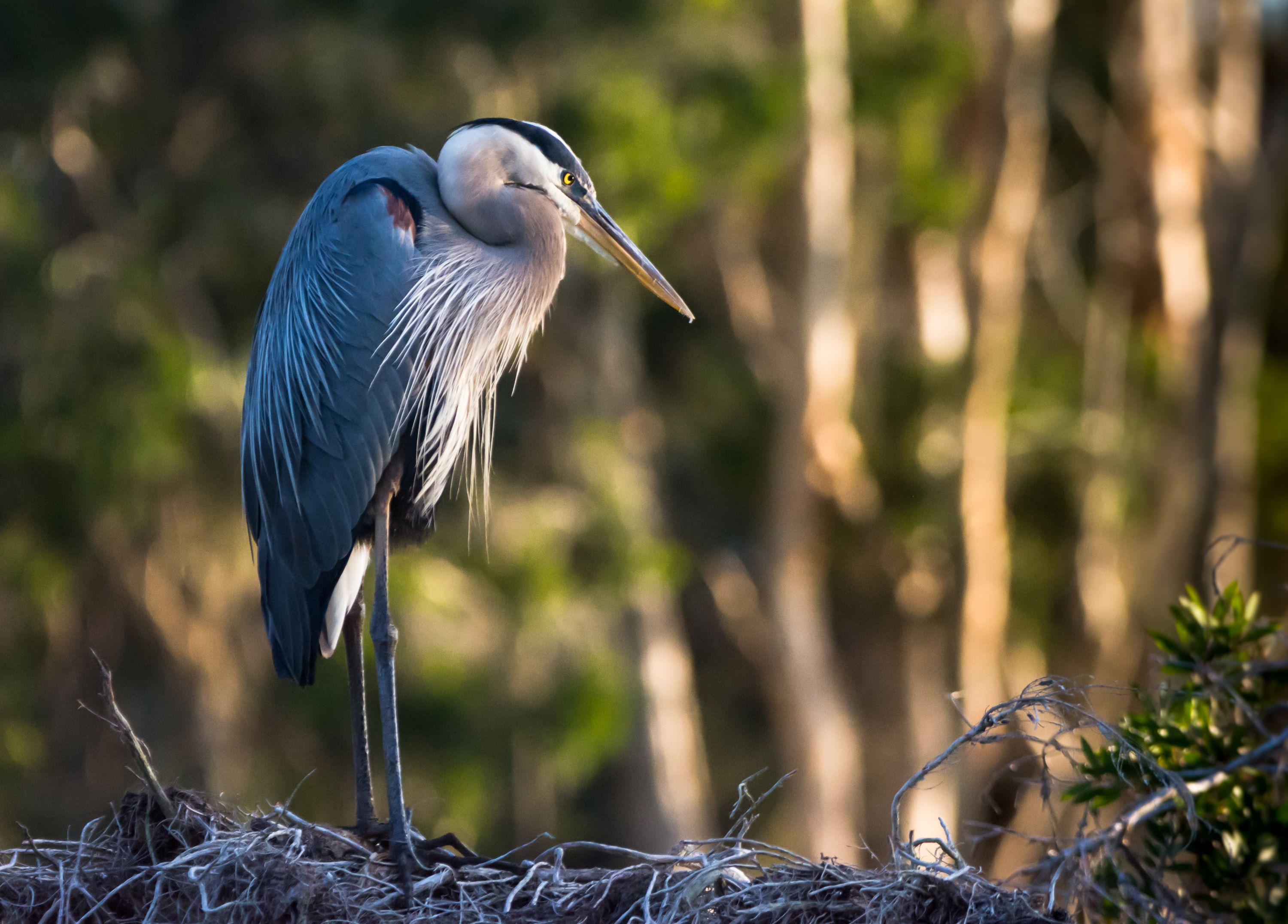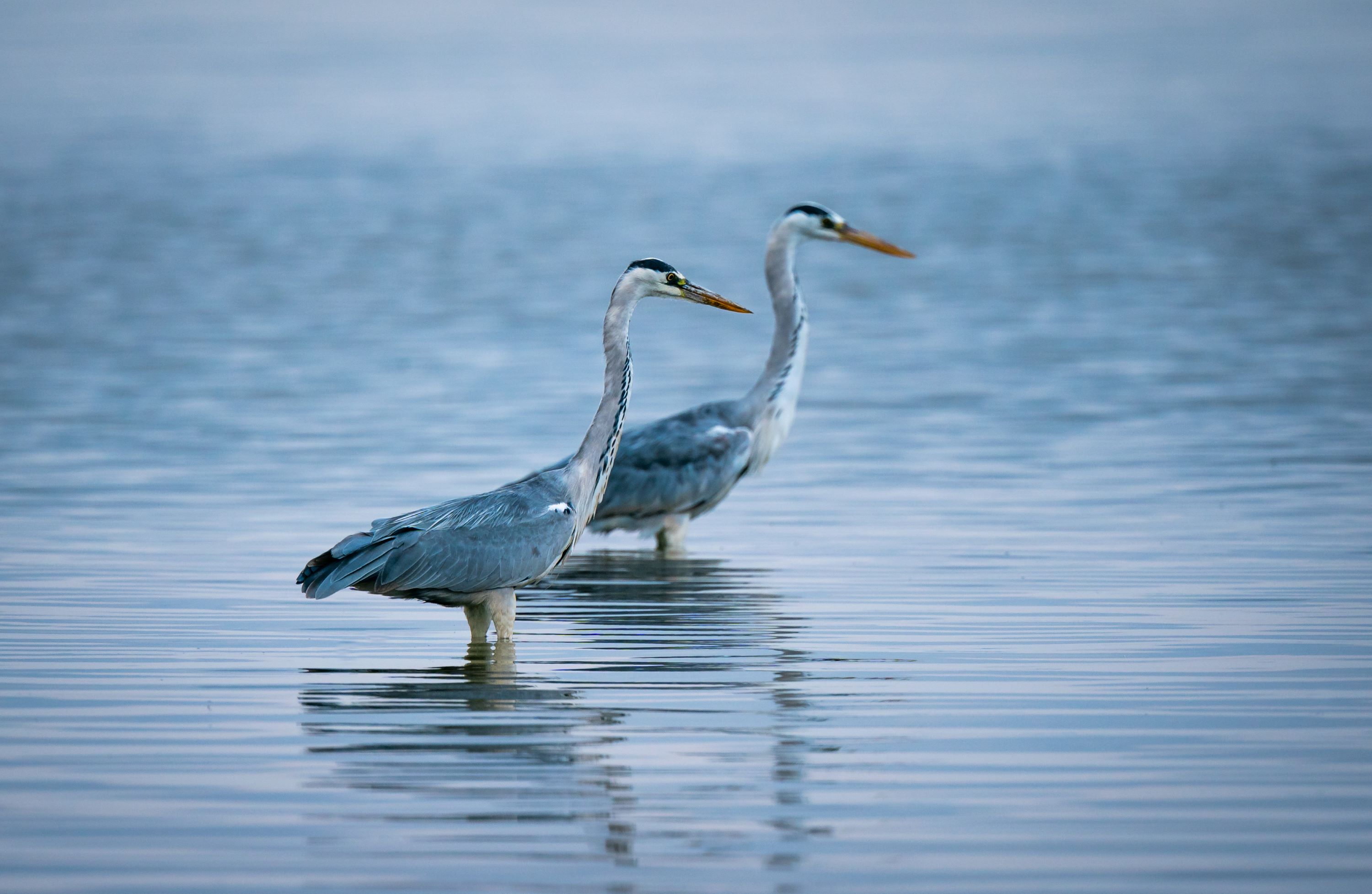
Great Blue Heron: A Majestic Wader of the Waters
Introduction to the Great Blue Heron
The Great Blue Heron, scientifically known as Ardea herodias, stands as one of the most distinguished and elegant wading birds in North America. Renowned for its striking size, poised hunting stance, and regal bearing, the Great Blue Heron is a symbol of the diverse aquatic ecosystems it inhabits.
Physical Description
The Great Blue Heron is the largest heron in North America, characterized by its long legs, neck, and bill. Adults typically stand about 4 feet tall with a wingspan reaching up to 6 feet. They exhibit a striking blue-gray plumage, with a black stripe over the eye extending to black plumes on their head. In flight, their neck curls into an ‘S’ shape, and their long legs trail behind, creating an unmistakable silhouette.
Habitat and Range
This heron is adaptable to a wide range of habitats, found near the shores of open waters and in wetlands across North and Central America, the Caribbean, and the Galápagos Islands. They prefer freshwater and saltwater environments, including marshes, rivers, lakes, and coastal shorelines.

Breeding and Nesting Habits
Great Blue Herons are solitary creatures but come together in colonies, known as heronries, for breeding. These colonies can be located in trees, reed beds, or on ground sites near water bodies. Their nests are large platforms made of sticks and lined with softer materials like moss, leaves, or reeds.
Egg Laying and Incubation
The female heron lays 3 to 7 pale blue eggs, which both parents incubate for about 27 to 29 days. These eggs are incubated predominantly by the female during the night and by both sexes during the day.
Chick Rearing and Parental Care
The chicks are born altricial, meaning they are dependent on their parents for warmth and food. Both parents feed the chicks by regurgitation. The young herons fledge the nest at around 60 days but may continue to rely on the parents for food and care for several weeks thereafter.

Feeding Behavior
Great Blue Herons feed mainly on fish, but their diet is quite varied and may include amphibians, reptiles, small mammals, and even birds. They are patient hunters, standing still in shallow water or on the shore, waiting to strike swiftly with their long bills to catch unsuspecting prey.
The Great Blue Heron in Utah
In Utah, the Great Blue Heron can be observed along the wetlands, rivers, and lakes, including the Great Salt Lake and its surrounding marshes. They are a common sight in these habitats, where they contribute to the ecological balance by controlling fish and amphibian populations.
Conservation Status
The Great Blue Heron is currently listed as Least Concern by the IUCN. However, they are susceptible to habitat degradation, especially in wetlands, and are affected by water pollution, which impacts their food sources.

Conclusion
The Great Blue Heron, Ardea herodias, with its serene demeanor and graceful presence, is a captivating sight in the wetlands and waterways of North America. Its adaptability to various aquatic environments and effective hunting skills make it a vital player in the ecosystem. Observing these magnificent birds in their natural habitat, as can be done in Utah, offers a chance to appreciate the beauty and complexity of avian life and the importance of conserving natural wetlands and water bodies.